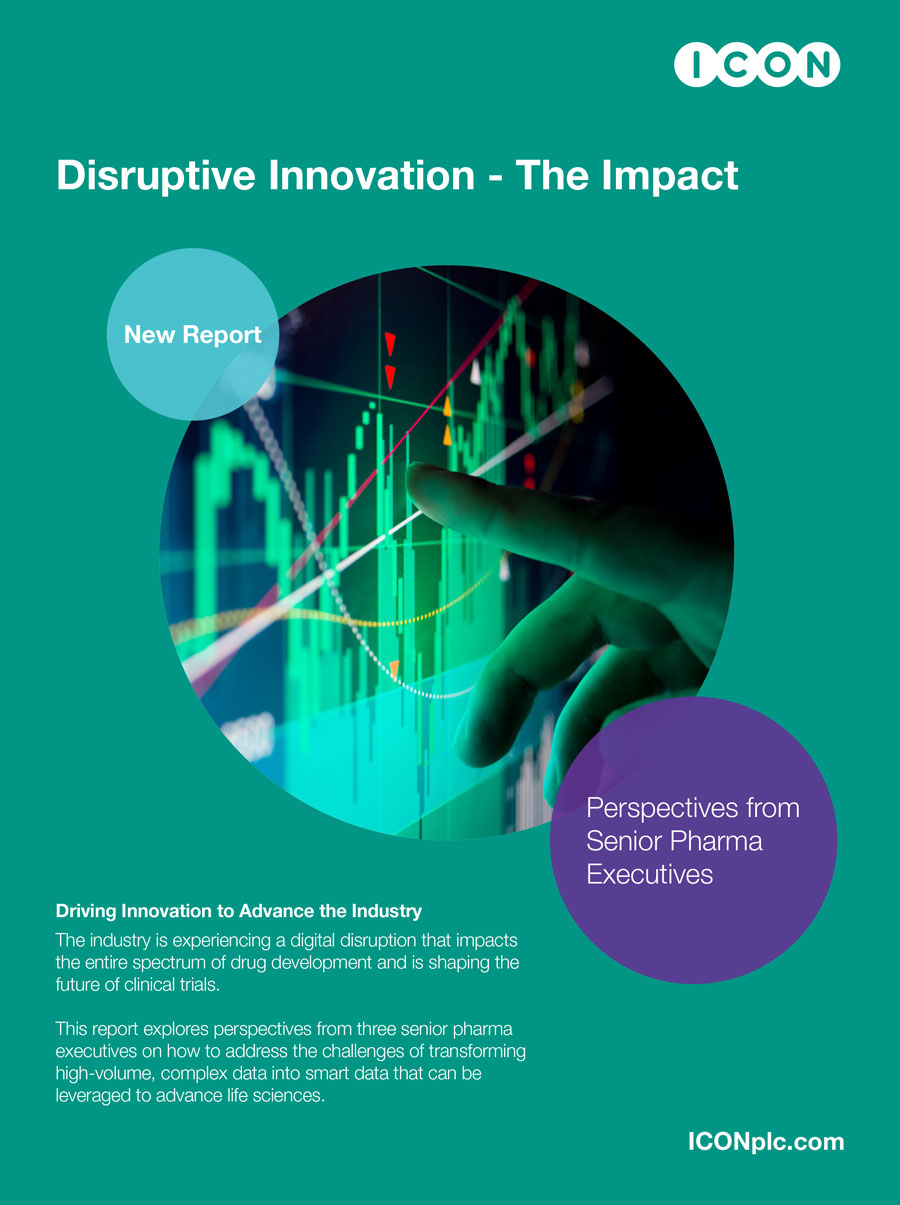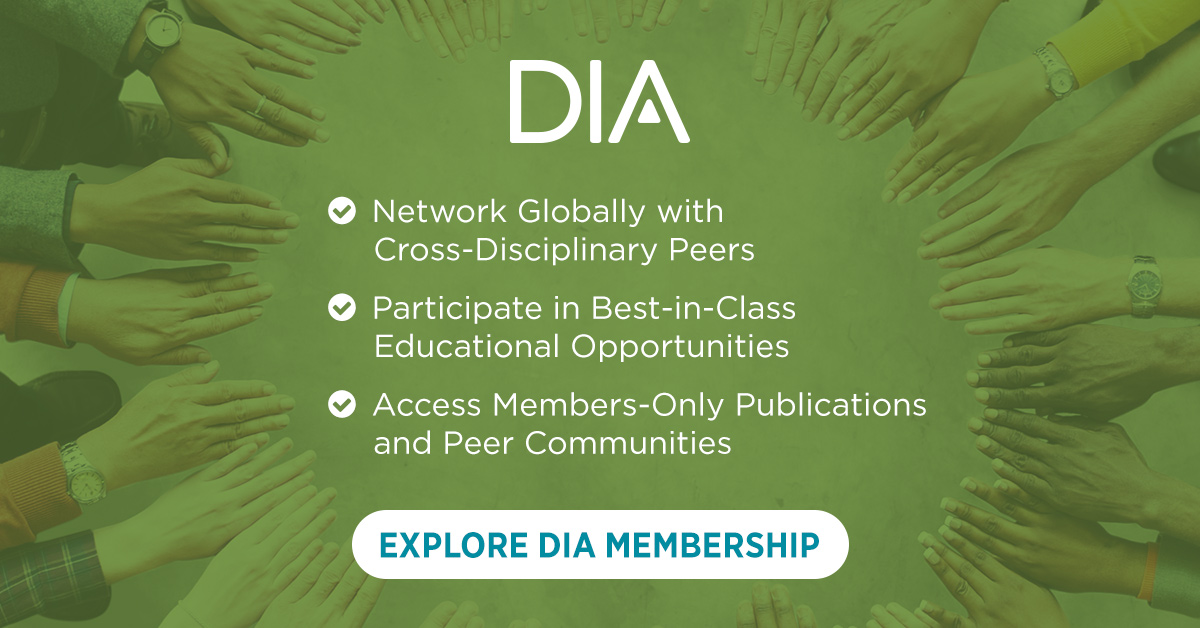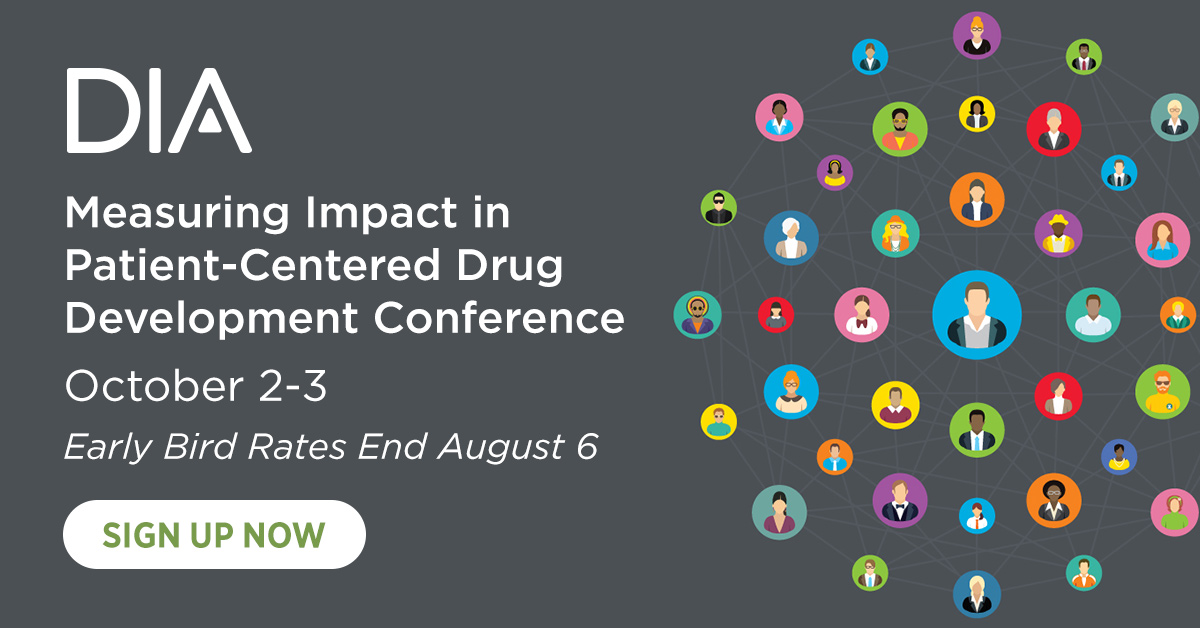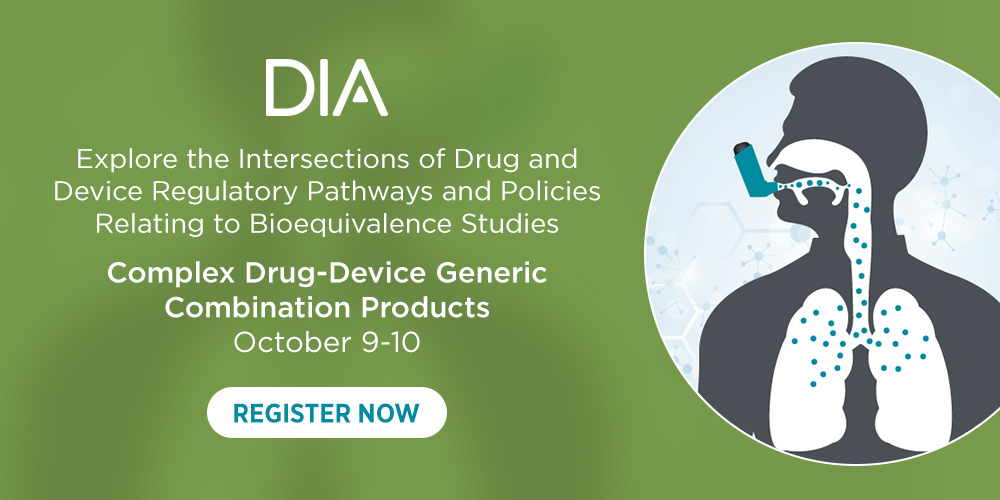June2018 Global Forum
Table of Contents
DIA EUROPE 2018
Introduction
Trust in Technology, or Trust in Each Other?
HTA Synergies
DIA EUROPE 2018 Continued
Current Regulatory Issues
WHITE PAPER
Executive Leadership
Subscribe
Love Global Forum‘s new online format? Subscribe today and never miss an issue.
Executive Leadership | Editor’s Message
To Our Readers
Finding a Common Language
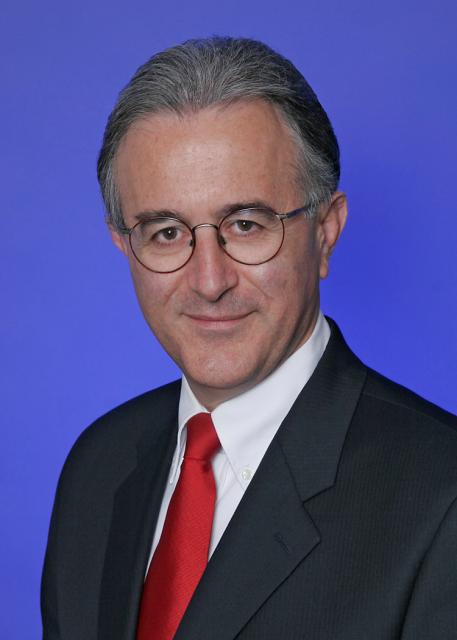
Alberto Grignolo
Editor
Fellow of DIA
s a young professional starting an industry career in regulatory affairs almost four decades ago, I was soon confronted with the reality that the pharmaceutical industry and the Agencies that regulated it were antagonists, if not outright enemies.
My mentors advised and trained me to be wary, circumspect, and diffident when communicating with the US FDA. I was told that FDA reviewers were instructed to view industry in the same way, and to watch out for the worst of behaviors from sponsors. Apparently, there were sound historical reasons, war stories, and battle scars on both sides to justify these negative attitudes. Each party expected the other to be obstinate, unreasonable, illogical, generally untrustworthy, and only occasionally (when forced) honest and transparent. The situation in Europe, with its background of pre-1992 regulatory fragmentation affording little opportunity for uniformity of industry-Agency dialogue across the Continent, was no better. Asia, Central and South America, and Africa did, and to some extent still do, suffer from a degree of fragmentation that leads to poor communication, duplication, and misunderstandings.
Editorial Board
Content stream editors
Translational science
Gary Kelloff US National Institutes of Health
David Parkinson ESSA Pharma, Inc.
regulatory science
Yoshiaki Uyama Pharmaceuticals and Medical Devices Agency (PMDA)
Adora Ndu BioMarin Pharmaceutical, Inc.
Patient engagement
Deborah Collyar Patient Advocates In Research (PAIR)
Lode Dewulf Servier
Value & access
Edith Frénoy European Federation of Pharmaceutical Industries and Associations (EFPIA)
Sean Tunis Center for Medical Technology Policy (CMTP)
Editorial Staff
Alberto Grignolo, Editor PAREXEL International
Ranjini Prithviraj, Senior Managing Editor, Associate Director DIA Publications
Sandra Blumenrath, Science Writer DIA Publications
Chris M. Slawecki, Senior Digital Copyeditor DIA Publications
Regional Editors
AFRICA
David Mukanga Bill and Melinda Gates Foundation
ASEAN
Silke Vogel Duke-National University of Singapore Graduate Medical School
AUSTRALIA/NEW ZEALAND
Richard Day University of New South Wales, Medicine, St Vincent’s Hospital
CANADA
Judith Glennie JL Glennie Consulting, Inc.
Megan Bettle Health Canada
CENTRAL AND SOUTH AMERICA
Jaime Oliveira Bayer S/A
CHINA
Ling Su Shenyang Pharmaceutical University, Lilly Asia Ventures
EUROPE
John Lisman Lisman Legal Life Sciences
INDIA
J. Vijay Venkatraman Oviya MedSafe
JAPAN
Junichi Nishino Novartis
US
Ann Meeker-O’Connell Johnson & Johnson Quality and Compliance
DIA Membership
Bringing together stakeholders for the betterment of global health care.
PARADIGM: A Novel Patient Engagement Initiative and a Measure of Our Time
Pfizer Global Patient Affairs,
Global Lead Healthy Ageing
he legitimization of patient engagement within the medicine lifecycle is burgeoning. Patient advocacy groups and industry have, both individually and in partnership, formed initiatives to define and draft frameworks that give shape to what has previously been a largely ad hoc process. A shared desire exists to embed patient engagement as standard practice within the medicines lifecycle.
![]() Podcasts
Podcasts
Clinical Training Critical in China’s Cancer Fight
![]() Podcasts
Podcasts
AI: Opportunity for More Informed Drug Development Decisions
![]() Podcasts
Podcasts
Tackling Ethical Questions in Clinical Research and Drug Development
![]() Podcasts
Podcasts
WHO 2030 Framework for Efficient, Effective Regulation
White Paper
Proceedings: DIA Europe 2018
Proceedings from
DIA Europe 2018
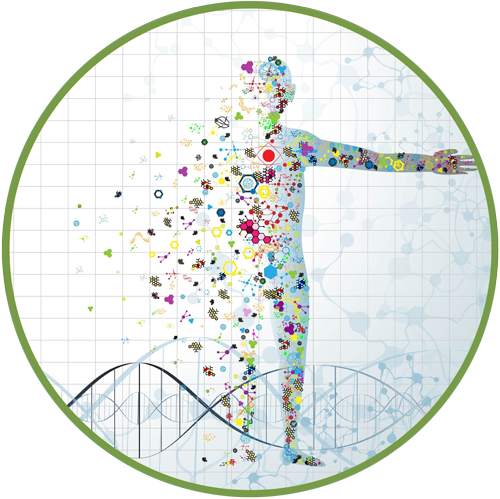
e are truly at the crossroads of healthcare. Think about it. We’ve been talking about such a wide range of topics that start from early discovery to licensure, post-licensure, patient engagement, the whole spectrum, and then most importantly: How do people continue to have enduring access to medicines?” — Barbara Lopez Kunz, Global Chief Executive, DIA
The following short articles provide an overview of some of the main takeaways from DIA Europe 2018.
Proceedings: DIA Europe 2018

Trust in Technology, or Trust in Each Other?
Raleigh E. Malik
DIA Senior Scientist
Patrick Brady
VP and Head of Regulatory Policy and Intelligence,
Bayer
Simon Brown
Global Head,
Learning Centre of Expertise and Novartis Universities
Detlef Hold
Global Strategy Lead Knowledge Cycling,
PD Faster Filing Program,
Genentech Inc. (A Member of the Roche Group)
he DIAmond session Exploring the Use of Artificial Intelligence at the 2018 DIA Europe Meeting explored the concept of human trust both in technology and with each other. The diverse panel of stakeholders discussed current perceptions of artificial intelligence (AI) applications and considerations for how AI will impact professionals working in therapeutic development. Here are a few key takeaways:
- Society is still at the beginning of fully harnessing the capabilities of AI.
- Regulatory authorities recognize that AI will impact pharmaceutical regulatory decision-making but acknowledge that, in general, regulators have not begun to specifically address it.
- Trust in technology will result from an understanding of accountability and transparency.
- Advances in data collection and analysis are driving pharmaceutical professionals to consider how best to evolve their skills to meet the increase in knowledge acquisition.
Proceedings: DIA Europe 2018

Debra Michaels
DIA Senior Scientist
ne can’t talk about development and regulatory evaluation of today’s medicines without mentioning patient centricity. Though often discussed, do we know what successful patient-centric practice really looks like? And does it look that way to everyone? Bettina Ryll, Founder of the Melanoma Patient Network Europe, led a panel of mixed stakeholders to explore the meaning of patient centricity today. Here are some of the key takeaways:
- While all represented stakeholders believe in the importance of focusing on the needs of the patient in their work, they acknowledged room for improvement with regard to systematic inclusion of the patient voice and enhancing the skills of patient advocates.
- The patient voice is of particular importance in Health Technology Assessment, where patient input can aid with decisions about which products to assess. It may also influence how the product’s value is assessed by the patients for whom it is intended. HTA stakeholders can and must improve the input process by finding effective ways to incorporate patient feedback through real world data.
- There needs to be a consistent engagement of patients by industry and regulators, especially in the early stages of the product life cycle.
Proceedings: DIA Europe 2018

Aligning on Unmet Medical Need: Mission Impossible?
Inka Heikkinen
DIA Senior Scientist
urrently, much development is being steered toward disease areas where there has been little movement in R&D and high unmet medical need remains. The concept of unmet medical need is one of the guiding elements of numerous regulatory and market incentive programmes throughout Europe, and was the crux of the DIA Europe 2018 DIAlogue session The Role of Unmet Need in Regulatory and Pricing Decision Making.
Key Takeaways
- Industry and sponsors who continue investing in medicines R&D for unmet medical needs would benefit from more predictability throughout the lifecycle of these products
- EMA, EUnetHTA, and payer organisations all recognize the challenge to increase the predictability of their decision outcomes, and unmet medical need is one of the elements of the EMA-EUnetHTA work plan for 2018-2020.
- European-level legislation that establishes the EMA’s remit and responsibilities does not fully align with national reimbursement policy in some countries, which forces these decision makers to use different weighing and criteria; better alignment would help regulators more efficiently allocate their limited resources
- Industry experts note that, while the benefit of the first-in-class therapy may not be high, such innovation often paves the way for subsequent products which might be more effective; at the same time, they have expressed concerns about the appropriateness of using quality-adjusted life-year (QALY) to measure whether or how an unmet medical need is addressed
- Demonstrating to the EMA that a medicine meets an unmet need won’t by default convince HTA assessors, payers, or other decision makers later in the value chain.
Proceedings: DIA Europe 2018

Big Data Projects across the EU, US, and Japan
Victoria Pauli
PhD Student,
Technical Research and Development,
Novartis Pharma,
Basel
umerous initiatives from sponsors and regulators are currently evaluating how Big Data can accelerate drug development, maintain drug safety, and affect the regulatory landscape. In the session Overview of Major Big Data Projects across EU, US, Japan, panelists from the EMA, FDA, and PMDA gave an overview of ongoing initiatives in Europe, Japan, and the US, attempting to find common pathways and align regulatory strategies.
Key Takeaways
- The ‘real world’ is represented significantly better by RWE (Real World Evidence) than by substantial evidence from well-controlled clinical investigations. Using RWE in regulatory decision making is especially recommended in the rare disease and oncology sectors where clinical data might be limited. However, it is vital that we gain a deep understanding of the quality of the available data before making any regulatory decisions.
- Among the expected Big Data challenges are p-hacking, which affects how data are analyzed and interpreted, and data ownership, an issue that arises when datasets are solely licensed to the pharmaceutical industry from independent partners.
- Two FDA-endorsed projects are the first steps to make the collection and utilization of Big Data a new standard in health care: the Sentinel Initiative and the FDA MyStudies App.
- A recently founded EMA Big Data taskforce is set out to characterize the Big Data landscape and investigate how it can benefit regulatory decision-making.
- Japan currently has two established Big Data projects: MIHARI (the Medical Information for Risk Assessment Initiative), which enables the systematic use of electronic healthcare records, and MID-NET (the Medical Information Database Network), which currently combines 23 hospital records.
Proceedings: DIA Europe 2018

Regulatory Access Pathways to Facilitate Early Access, HTA Synergies
Manon Cappadoro
Leader of Tomorrow Contributor
any patients with severe illnesses still have no treatment today. Disparities in regulations and timelines have proven to be a real obstacle to the access to medicines in the European Union. To facilitate the generation of robust and relevant evidence to support earlier decision making and access to medicines in Europe, specific regulatory tools have been established by the EMA, including:
- PRIME: The PRIority MEdicines scheme aims to foster the development of medicines with major public health interest and should be considered in case of very promising exploratory data results. Benefits include scientific and regulatory advice at key development milestones, optimization of development for robust data generation, and the possibility to receive accelerated assessment of the Marketing Authorization Application.
- Scientific Advice that can be requested from the EMA at any point in product development, plus the additional possibility of consultation with Health Technology Assessment (HTA) bodies and/or with US FDA.
- Conditional Marketing Authorization: Authorization before comprehensive data are available, when benefits of early access outweigh its risks, in order to address unmet medical needs.
Proceedings: DIA Europe 2018

Can Regulators and HTA Bodies Create Synergies for Patient Access?
Chris M. Slawecki
DIA Senior Digital Copyeditor
ealthcare systems in economies of every size continue to struggle with finding ways to ensure access to safe and efficacious healthcare products for their patients. These struggles have had one positive impact: Stakeholders throughout the product development lifecycle now agree that discussing access issues after a product has received regulatory and marketing approval is too inefficient, too unpredictable, and most of all, too late.
Key Takeaways
- Access decisions must be based on evidence, not emotion
- Simultaneously and mutually define evidence required for access decisions with evidence required for regulatory and marketing decisions
- This initiates access conversations among all stakeholders and enables prospective planning of evidence required downstream
- Long-term collection of data, while complex, is essential for conditional approval and other regulatory accelerated access pathways
- Collaborations beyond individual product pathways must continue
- More clearly define treatment guidelines and patient desired outcomes
- Design and implement registers (registries) for data collection and sharing
- Horizon scanning to prospectively identify and plan for financial, clinical, or organizational impacts on healthcare systems
- Companies developing advanced therapy medical products have been highly receptive to and encouraged by the EMA’s scientific advice and parallel advice tools.
Why this is important: While scientifically and clinically promising, the emergence of personalized medicine and immune-oncology, combined with the impact of more people living with more chronic illness for longer lifespans, are straining the capacity and resources of healthcare systems in nearly every nation.
“The overall goal of the track was to really advance the conversation that we have had now, for a number of years, between all stakeholders about how we can ensure together timely access for patients,” explained Jordi Llinares Garcia, MD, Head of Scientific & Regulatory Management, European Medicines Agency.
Proceedings: DIA Europe 2018

The Journey to Outcome-Driven Health Systems
Chris M. Slawecki
DIA Senior Digital Copyeditor
rescribing physicians, patients, and payers around the world have come to recognize that their healthcare systems are increasingly vulnerable to social and economic pressures. Aging populations who have to be treated for chronic diseases for decades, the emergence of groundbreaking immunotherapies and other weapons in the fight against cancer, and other trends, have created a dangerous imbalance between the demands for healthcare delivery and the resources available for that purpose. Will realigning these systems “from volume to value” save them?
Key Takeaways
- Defining an “efficient system” or a “valuable outcome” must be based on what outcomes matter most to the patients these systems serve
- Personalized medicine and digital patient engagement will ultimately deliver therapeutic and cost benefits throughout these systems:
- Rigorous collection and analysis can convert patient data into compelling evidence
- Compelling evidence can drive meaningful improvements to standards of care
- Meaningful improvements to care can drive healthcare policy, pricing, and related decisions
- Value does not automatically convert into price; neither does the reverse.
Why this is important: Innovative new therapeutic options can also introduce new clinical and economic uncertainties. Consequently, innovation in healthcare must mean more than delivering more complex technologies more quickly to more patients; it must also ensure that the system delivering these technologies can sustain them. The safest and most efficacious medicine in the world has no value if patients cannot afford it or access it.
“It’s through the collaboration across multiple stakeholders that we find ways all together to address those new questions and challenges that come to us,” said Claudine Sapède, Global HTA & Payment Policy Lead, F. Hoffmann-La Roche.
Proceedings: DIA Europe 2018

Medicines of the Future: What Will Innovation Need, What Will Innovation Need and Deliver?
Chris M. Slawecki
DIA Senior Digital Copyeditor
iscovering, developing, and delivering the “medicines of the future” is just as much about process as it is about product. Digital technology, a deeper understanding of the epidemiology of disease, more engaged patients and other trends, are bringing stakeholders together to collaboratively refine and redefine the processes we use today to improve on how and what we deliver to the patients of tomorrow.
Key Takeaways
- Our increasing ability to understand the molecular mechanisms of disease and the resulting “fragmentation” of indications bring both new challenges and new opportunities, and require not only innovative molecules and therapeutic approaches but also innovative study designs and endpoints.
- Application of digital connected technologies to drug development and clinical care, and new approaches and mindsets to patient data collection and data sharing, are enabling us to derive rapid insights regarding patient benefit and safety and drive beneficial behaviors in increasingly sophisticated ways, helping us to design more efficient and effective studies, improve care pathways, and positively impact patient health.
- Collaborative approaches between all stakeholders (patients, academics, regulators, HTAs, payers, and industry) are becoming increasingly important if we are to harness these innovations effectively and ensure that beneficial innovations reach the right patients in a timely manner.
Why this is important: “Novel technologies and approaches require an awful lot of data, at a high quality, over a long period of time, and this requires planning, collaboration, infrastructure, and requires us to work very effectively together,” explained Thomas Metcalfe, Strategic Innovation Leader, Pharma Development, F. Hoffmann-La Roche (Switzerland). “The enormous resource investments which are being put into this area really require us to behave responsibly, to reduce uncertainty, manage risk effectively, and ensure that the money that’s being put into developing new medicines for the benefit of patients is well-invested. And this requires, again, really effective collaboration or collaborative approaches between all stakeholders.”
Proceedings: DIA Europe 2018

Chris M. Slawecki
DIA Senior Digital Copyeditor
s clinical and healthcare data keep growing in variety, volume, and velocity, the use of Big Data and artificial intelligence in clinical research and healthcare product development in the EU will not slow down any time soon. Experience has already shown that more complex sources and types of data require more complex data archiving and access systems, which in turn require more complex data governance and protection structures.
What is Big Data and how can it lead to delivering quicker patient access to medicines and better patient outcomes?
Key Takeaways
- Big data and artificial intelligence, including machine learning and natural language processing, are complementary: More big data provides more analysis and “learning” opportunities for artificial intelligence.
- Real World Data from electronic health records, health insurance claims, and other sources (e.g., wearable devices, mobile health apps, etc.) is a sizeable and growing component of Big Data.
- Regulators have established systematic analyses of big data for drug safety, but efficacy analyses still present challenges such as bias and lack of standards.
- No single sector or organization can make significant progress alone; partnerships and collaborations such as the EU Innovative Medicines Initiative and EU regulators’ Big Data Taskforce will be essential in moving this field forward.
“I think it came very clearly out of the whole session that big data and AI are completely complementary. You cannot do the one without the other,” suggested Isabelle de Zegher, Vice President, Integrated Solutions, PAREXEL Informatics (Belgium). “You can do AI because you have big data. But also, very interestingly, you can actually generate more big data because of AI.”
Why this is important:
- Data-driven program and trial design: More efficient and accurate data analysis will power more efficient protocols and other incremental improvements in development projects.
- Data-driven, automated operations: Process automation will free up resources to accept more projects into pipelines.
- Digital site and patient engagement: Online and other digital solutions will help more patients find more trials for their condition more easily.
- Decentralized and virtual trial models: More remote and/or virtual clinical trials will reduce the burden of travel on patients, making it easier for more patients to participate in more trials.
- Digital biomarkers and endpoints: More precise endpoints collaboratively developed with patients and captured through digital sensors will ultimately result in delivering the care that patients want.
“What was very good for me during the session here is that we start to feel that there is a common understanding of what needs to be done, and as an industry, we’re ready to go,” Isabelle said. “And I think that, for me, is the most important part — that commitment to actually do something different with Big Data.”
Proceedings: DIA Europe 2018

The Exciting Future of Pharmacovigilance
Chris M. Slawecki
DIA Senior Digital Copyeditor
he current pharmacovigilance landscape in the EU has been mostly shaped by the Pharmacovigilance Legislation which came into effect in 2012. Since then, innovations in pharmacovigilance (PV) science and technology, and collaborative projects on the European and international levels, have kept this field moving forward.
EudraVigilance has catalyzed an explosion in safety data and reporting. But does an increased volume of safety data automatically equate to an increase in meaningful safety information? Are we learning anything from these data, or simply adding more hay to our haystack as we search for our elusive PV needle?
Key Takeaways
- Innovation, innovation, innovation!
- Innovative regulatory and legislative frameworks enable more innovative technologies and systems
- Global harmonization and pragmatic implementation ensure minimal regulatory burden and maximum patient protection
- Pharmacovigilance science and technology continue to advance quickly
- To create a future where all patients are equally protected regardless of where they live, collaboration among all international stakeholders (industry, regulators, patients, healthcare professionals, WHO, Gates Foundation, etc.) is essential
- Do we know how to measure the true impact of PV?
Why this is important: “Both industry and regulators, we’re struggling with, ‘What is it we can do in order to better understand the impacts of regulatory decisions? And are those decisions and those communications really driving the change in behaviors and allowing patients to benefit from our products to the maximum potential of those products?’” explained Vicki Edwards, Vice President, Pharmacovigilance Excellence & QPPV AbbVie. “The significance of the session is that it indicated that technology and advancing pharmacovigilance science is really moving forward quickly, and we have to be in front of that.”
Proceedings: DIA Europe 2018

Clinical Trial Development, Transparency, and Medical Information
Gaining the Trust of Patients
Sandra Blumenrath
DIA Science Writer
ata transparency in clinical trials is key. Allowing for public scrutiny, for example, establishes trust and confidence in clinical trials among patients.But transparency also furthers our scientific knowledge and helps us avoid clinical trial duplication. With increasing data sharing activities and more than one year of experience of publishing clinical data in the EU, sessions in this topic area focused on transparency benefits, challenges, and best practices as well as suggestions for ways to improve the use of the large amount of clinical information made public in today’s research environment.
Key Takeaways
- Use of shared data and documents for secondary research activities (or secondary analysis) is becoming increasingly popular and will drive innovation. Data sharing is facilitated both by access to documents via the websites of regulatory bodies and by access to subject-level data by other means.
- Challenges of data sharing relate primarily to the protection of data privacy rather than to issues with Commercially Confidential Information. Giving patients sufficient information about how their data will be shared responsibly is crucial to ensure their trust.
- Since information made publicly available is automatically available globally, harmonization of transparency requirements and best practices is a must.
- Informed Consents and Lay Summaries of study results can be significantly improved by avoiding jargon, complicated language, and lengthy documents.
Why this is important: Research participants drive medical product development. Without an ability to gain the trust of patients and effectively recruit research participants, there will be no clinical trials and no new medicines.
Proceedings: DIA Europe 2018

A New Era for Medical Devices
Current Regulatory Issues
Sandra Blumenrath
DIA Science Writer
n the last year, large-molecule (biologics) submissions to the Food and Drug Administration (FDA) and other regulatory agencies far outnumbered submissions for small-molecule therapies. Since nearly all of these biological products require a device to administer the drug, approval applications for combination products (or drug-device combinations) are on the rise as well, receiving increased scrutiny for example by the FDA’s Center of Devices and Radiological Health (CDRH). Sessions in this topic area focused on changes and challenges in the regulatory landscape for drug-device combinations.
Key Takeaways
- Differences in terminology in the US and EU (“combination products” versus “drug-device combinations”) complicate the issue of medical devices from both a regulatory and a GMP perspective.
- The EU Medical Device Regulation (MDR), which entered into force in May 2017 and governs market access to devices, sets new legal requirements to meet the high quality and safety standards for medical devices and address common safety concerns. The regulation applies to all new devices, but it’s still unclear to what extent older devices will be affected.
- In Europe, submissions of a drug-device combination (DDC) need to be accompanied by a statement from the Notified Body, which assesses conformity under the respective EU Directive. Although the content of the statement is described in the MDR, its precise extent and length remain unclear.
- The growing number of guidelines published by regulatory bodies across the globe, and the different ways combination products are defined, make it increasingly difficult to harmonize the regulatory expectations for these products.
Why this is important: In light of the constantly evolving global regulatory environment, it is increasingly challenging to prepare effective combination product submissions. To incentivize the development of DDCs and accelerate the approval process, we need clearer instructions for obtaining Notified Body statements as well as a clear overview of regulatory expectations. Diverging regulatory expectations slow down the global development of DDCs. Therefore, our efforts have to focus on harmonization.
Proceedings: DIA Europe 2018

Building Efficiencies in Drug Development and Regulatory Approval
Collaborate Globally, Regulate Locally
Sandra Blumenrath
DIA Science Writer
globalized, harmonized approach to drug development and regulatory approval is typically considered the most efficient strategy to deliver the best outcome for all. However, there may be instances when multinational regulatory objectives may not serve global research needs and a local approach promises to yield better results. Below are some examples of initiatives discussed at DIA Europe 2018 that benefit from either global or local approaches.
Key Takeaways
- PMDA’s ‘Horizon Scanning’: Japan’s Pharmaceuticals and Medical Devices Agency (PMDA) proactively researches possible future innovative technologies across the globe and their impact on regulation to ensure timely updates of their regulatory framework.
- Advances in pediatrics: For low- to middle-income countries, unmet medical needs in pediatrics, including epidemiological research, will not be sufficiently addressed by the solutions and regulations of higher-income countries. Local and societal efforts will be critical in making progress in this area.
- Regulatory reliance and work sharing: Current work-sharing efforts among mid-sized regulatory agencies with limited resources and staff have helped these agencies meet their regulatory responsibilities.
- Harmonizing GMPs: The Pharmaceutical Inspection Co-operation Scheme (PIC/S) promotes mutual reliance agreements (MrAs) in alignment with the International Coalition of Medicines Regulatory Authorities (ICMRA) guidance on information sharing to harmonize Good Manufacturing Practices (GMPs).
- Product life cycle management: ICH and WHO guidances on post-approval changes are complementary and ought to be leveraged to advance the harmonization of regulatory frameworks for product life cycle management.
Why this is important: Although the approach taken in each of the cases above may be different, the common thread linking all of these examples is communication. In any globalization setting, dialogue will lead to collaboration, which in turn will lead to the trust necessary to advance regulatory science globally.
Proceedings: DIA Europe 2018

Advancing Clinical Research in Europe
Bringing Medicines to Patients Faster
Sandra Blumenrath
DIA Science Writer
he roads are increasingly converging for clinical research and how it is regulated. The new EU Clinical Trial Regulation optimizes safety surveillance at the Member State (MS) level, but while progressive, its implementation also poses new challenges for both Member States and Sponsors to meet the expectation of regulators. Sessions in this topic area focused on the impact of the new regulation on clinical trial stakeholders and discussed other opportunities to further European clinical trials, including the use of patient registries, innovative clinical trial designs, and the incorporation of real world data (RWD).
Key Takeaways
- EU Member States are progressing well in preparing for the implementation of the EU Clinical Trial Regulation. Remaining challenges include aggressive review timelines, harmonization of application outcomes, fee structures defined by MS to predict needed resources, and safety work sharing.
- Some registry studies have led to successful regulatory decision-making and serve as a valuable learning experience for both the regulators as well as the respective sponsors. Early interactions between regulators and registry holders during the development process can ensure that the quantity and quality of the collected data is in line with regulatory requirements.
- Complex, innovative clinical trial designs, such as basket, umbrella, and platform trials, have entered clinical research, and an increasing number of clinical trials now follow adaptive designs.
- Real world data are now commonly integrated into clinical research to enrich clinical trials and ensure decision-making that is complementary to randomized controlled trials.
Why this is important: To advance healthcare product development, we need to increase the efficiency of clinical trial design, avoid delays and costs, and plan for different outcome scenarios in the trial design process. Changes in the regulatory landscape as well as the use of new research approaches and technologies have the potential to advance clinical trials in Europe and bring medicines to patients faster.
Proceedings: DIA Europe 2018

Leaders of Tomorrow Brighten DIA Europe 2018
Tshaka Cunningham
Associate Director, Scientific Collaboration, DIA
he bright future of the pharmaceutical and healthcare industry was on full display during DIA Europe 2018, where more than 100 emerging young professionals participated in the inaugural DIA Leaders of Tomorrow (LoT) Program. To continue this positive momentum, a new Leaders of Tomorrow online Community has been created to give our young professionals a forum to continue their conversations and knowledge sharing all the way up to the DIA 2018 Global Annual Meeting in Boston this June.
- More than 700 emerging young professionals downloaded the LoT mobile app for DIA Europe 2018
- More than 30% of these professionals participated in the LoT challenges to build up activity-based points in the app
- The 15 most active users received complimentary registration to DIA Europe 2018 and were given special recognition by DIA senior leadership during the LoT Networking Reception
- More than 800 users have already signed up for the LoT app in association with our DIA 2018 Global Annual Meeting in June, and many have already begun to tackle the LoT challenges leading up to it. Join the conversation here.

Thanks for reading our June 2018 Issue!




